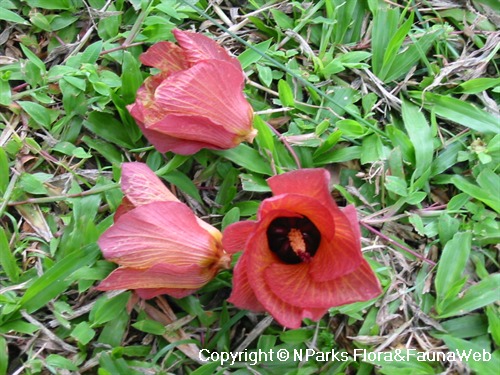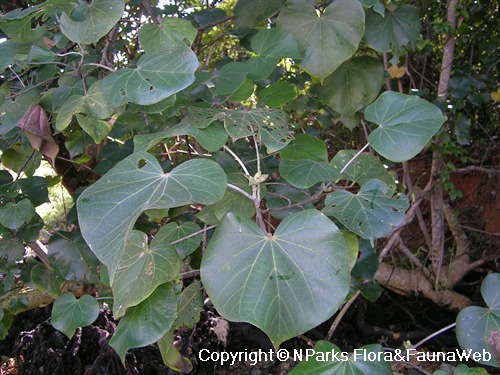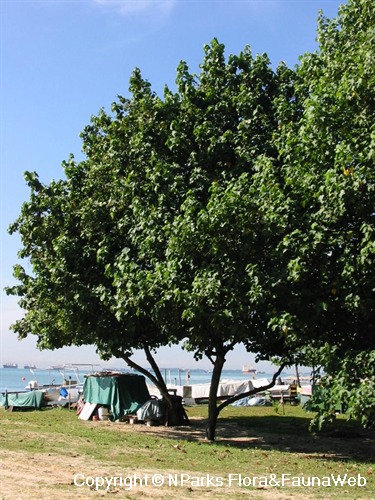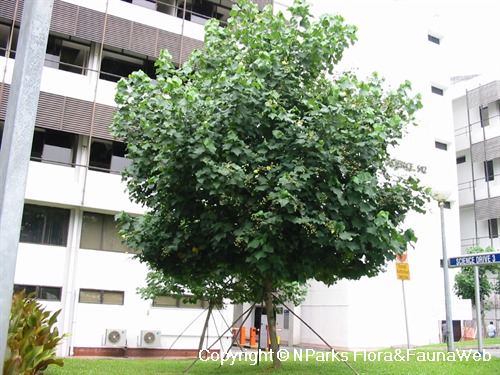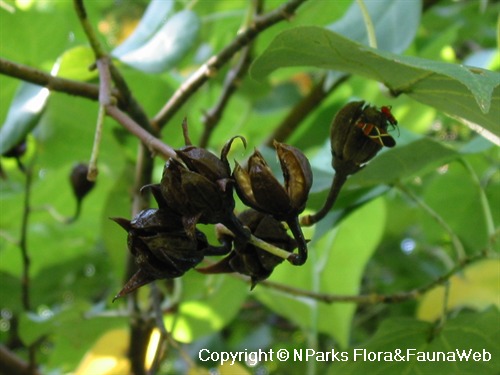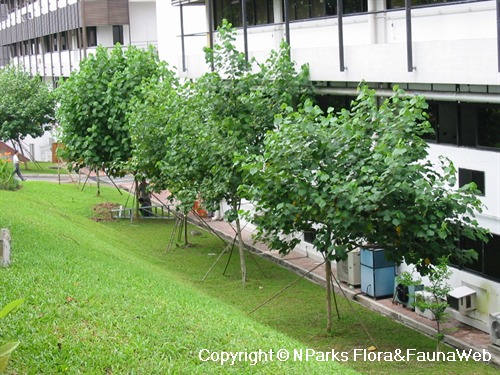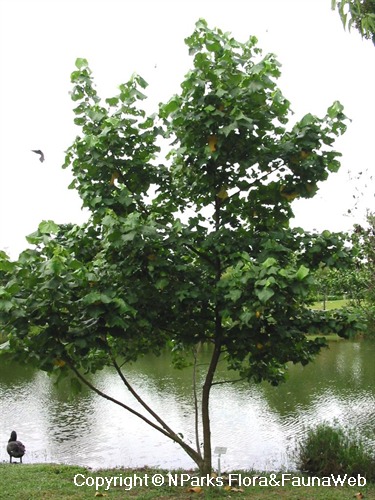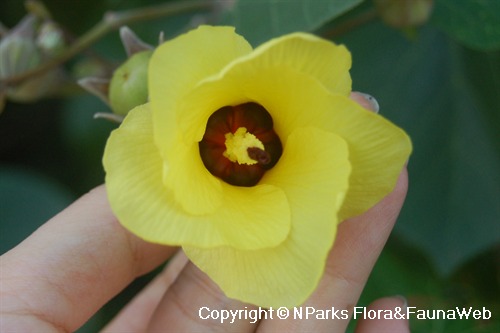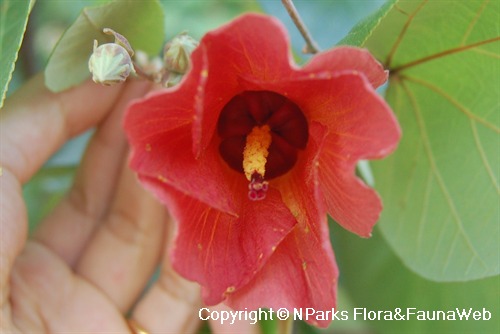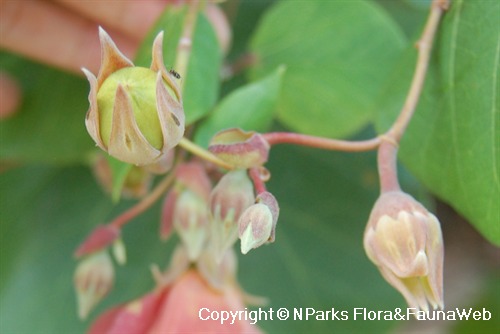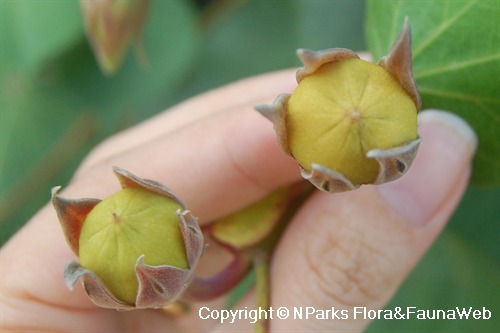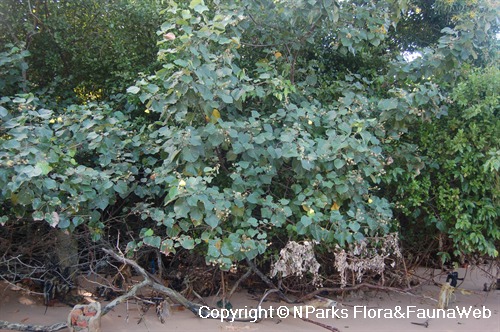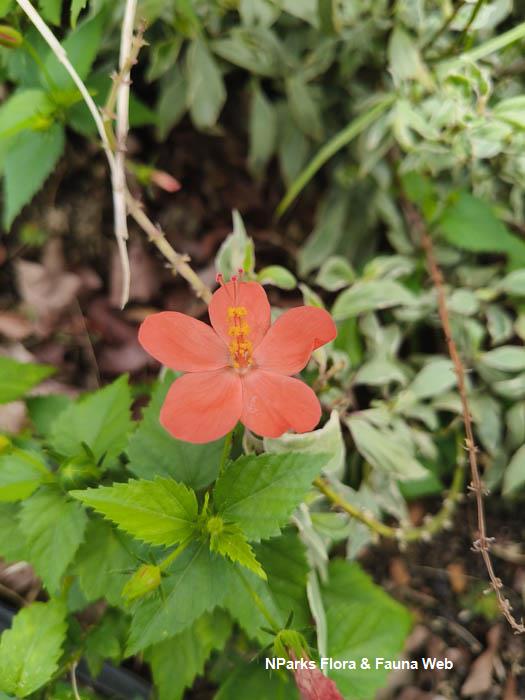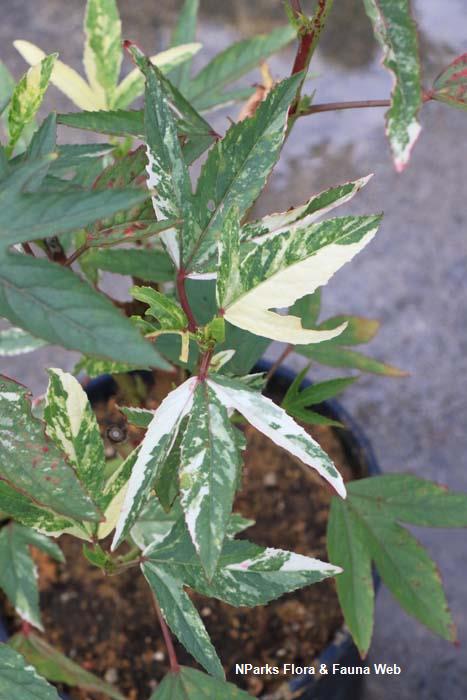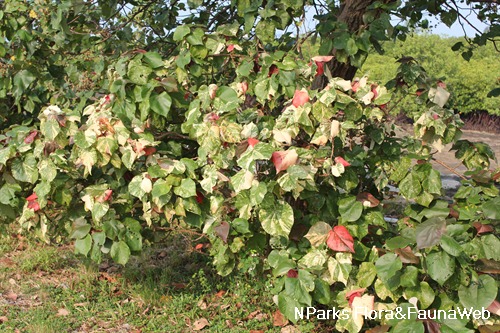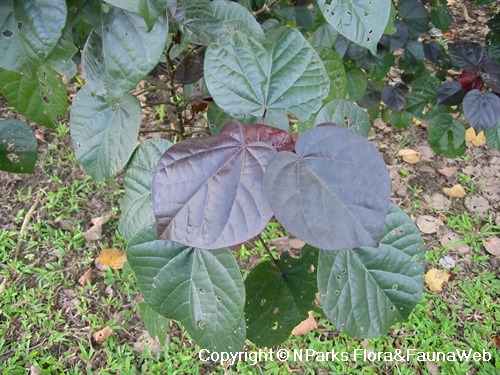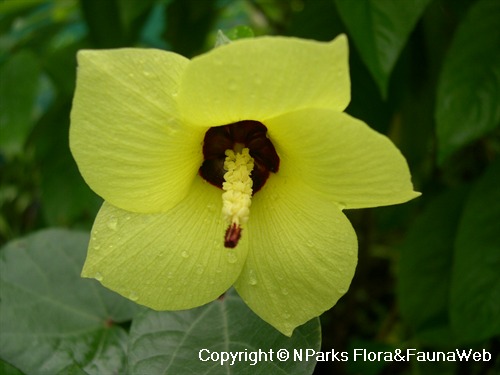
Back
Hibiscus tiliaceus L.
| Family Name: | Malvaceae |
| Synonyms: | Pariti tiliaceum, Hibiscus azanzae, Pariti tiliaceum var. heterophyllum, Abelmoschus boninense, Hibiscus tiliiaefolia, Hibiscus boninensis, Paritium tiliaceum, Talipariti tiliaceum |
| Common Name: | Sea Hibiscus, Beach Hibiscus, Linden Hibiscus, Cotton Tree, Baru Baru, Bebaru, Mahoe, 黄槿 |
Name
Classifications and Characteristics
| Plant Division | Angiosperms (Flowering Seed Plants) (Dicotyledon) |
|---|---|
| Plant Growth Form | Tree |
| Lifespan (in Singapore) | Perennial |
| Mode of Nutrition | Autotrophic |
| Plant Shape | Rounded |
| Maximum Height | 15 m |
Biogeography
| Native Distribution | Tropical Africa, Americas, Pacific, Indian Ocean, Southern China, Malesia, Northern Australia |
|---|---|
| Native Habitat | Terrestrial (Coastal Forest), Shoreline (Mangrove Forest, Sandy Beach) |
| Preferred Climate Zone | Tropical |
| Local Conservation Status | Native to Singapore (Least Concern (LC)) |
Description and Ethnobotany
| Growth Form | Small shrubby tree, up to 15m height in rich soils. Crown spreading to rounded, with many branches. |
|---|---|
| Trunk | Greyish brown with numerous reddish-brown lenticels. Suckers often form at base of tree. |
| Foliage | Leaves heart-shaped with pointed tip and finely-serrated margins, dark green above, covered with fine whitish hairs below, spirally arranged along stem. |
| Flowers | Produced in few-flowered inflorescences, each flower large, funnel-shaped, bright yellow with purple eye, opening at around 9am, maturing to dull orange and dull pink in afternoon, before closing and dropping off at around 4pm. Sepals form a pointed-tip cup. Free-flowering. |
| Fruit | Rounded explosive capsules, brown when mature, splitting into 5 parts to disperse numerous small kidney-shaped seeds. |
| Habitat | Sandy or rocky coasts, brackish riverbanks, and mangroves. |
| Similar | Resembles another mangrove inhabitant Thespesia populnea (Portia Tree), which has hairless, more fleshy untoothed leaves, and yellow flowers with yellow eye, as well as sepals that form a smooth-edged cup. |
| Cultivation | Fast-growng, requiring little maintenance, tolerates poor soils. Prune away suckers from base of trunk, if single or double trunk is desired. Easily propagated by seeds, stem cuttings and basal suckers. Roots easily, large branches can be cut and rooted in polybags to form 'instant trees'. |
| Ethnobotanical Uses | Edible Plant Parts : Edible Leaves Food (Fruit or Vegetable) (Herb or Spice) Others: Medicinal: Mature leaves used to treat fevers and coughs, leaf sap used as laxative or a lubricant for childbirth. Flowers used to treat ear infections and abscesses. Bark mucilage prescribed for dysentry in Philippines. Food: Young leaves eaten as vegetable. Products: Lightweight wood made into planks, outrigger canoes and household implements. Fibre from inner bark used to make ropes, fishing nets and hammocks. Wood can be rubbed vigorously with another piece of hardwood to start a fire. Seeds used in oinments, perfumes and oils for hair. |
Landscaping Features
| Desirable Plant Features | Ornamental Flowers, Ornamental Foliage |
|---|---|
| Landscape Uses | Coastal Plant, Beachfront / Shoreline, Phytoremediation (Ground / Water Contaminant(s)) |
| Thematic Landscaping | Naturalistic Garden |
Fauna, Pollination and Dispersal
| Fauna Pollination Dispersal Associated Fauna | Butterfly Host Plant (Leaves, Associated with: Odontoptilum angulatum, Rapala pheretima, Rapala suffusa), Bee-Attracting Plant |
|---|---|
| Seed or Spore Dispersal | Abiotic (Explosive Dehiscence) |
Plant Care and Propagation
| Light Preference | Full Sun |
|---|---|
| Water Preference | Moderate Water |
| Plant Growth Rate | Fast to Moderate |
| Rootzone Tolerance | Saline Soils / Salt Spray, Waterlogged Soils (Drains Site), Easy to Grow |
| Maintenance Requirements | Low |
| Propagation Method | Seed, Stem Cutting, Sucker, Air-Layering |
Foliar
| Foliage Retention | Evergreen |
|---|---|
| Mature Foliage Colour(s) | Green |
| Mature Foliage Texture(s) | Smooth, Velvety / Furry / Tomentose, Thin |
| Foliar Type | Simple / Unifoliate |
| Foliar Arrangement Along Stem | Spiral |
| Foliar Venation | Pinnate / Net |
| Foliar Apex - Tip | Cuspidate |
| Leaf Area Index (LAI) for Green Plot Ratio | 4.0 (Tree - Dense Canopy) |
Non - Foliar and Storage
| Trunk Type (Non Palm) | Woody |
|---|---|
| Bark Colour(s) | Greyish brown |
| Mature Bark Texture | Smooth |
| Stem Type & Modification | Woody |
| Root Type | Underground (Tap Root, Fibrous Root) |
Floral (Angiosperm)
| Flower & Plant Sexuality | Bisexual Flowers |
| Flower Colour(s) | Pink, Red, Yellow / Golden |
|---|---|
| Flower Symmetry | Radial |
| Flowering Period | Free-Flowering |
| Flowering Opening Time | Daytime |
| Flower Lifespan on Plant | 1 Day |
| Flowering Habit | Polycarpic |
| Inflorescence Size Remarks | Flowers open yellow in morning , matures to dull orange and pink in afternoon, before being shed in evening. |
Fruit, Seed and Spore
| Mature Fruit Colour(s) | Brown |
|---|---|
| Fruit Type | Dehiscent Dry Fruit , Capsule |
Image Repository
Others
| Master ID | 1661 |
|---|---|
| Species ID | 2954 |
| Flora Disclaimer | The information in this website has been compiled from reliable sources, such as reference works on medicinal plants. It is not a substitute for medical advice or treatment and NParks does not purport to provide any medical advice. Readers should always consult his/her physician before using or consuming a plant for medicinal purposes. |

